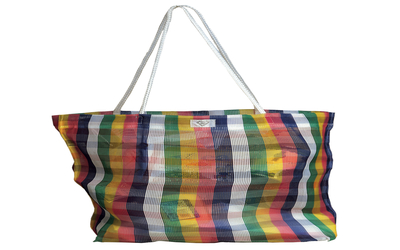Environmental wellness journalists, bloggers and enthusiasts all recently came together for a month of going plastic-free, to see what they might learn about taking care of the planet’s wellbeing. One such participant, Emily Main of Rodale.com, who started the inititative, commented, ‘While trying to live plastic free was a struggle, it has produced what we hope are some lasting behavioural changes. Our month was eye-opening, and we discovered, each in our own way, how much plastic had crept into our lives and just how easy it is to accept the disposable approach to living that plastic has helped create.’ So, what lessons can you take away from plastic-free month?
1. Carry your own cutlery: ‘Ever since moving out of New York City a few years ago, the amount of takeout food that I eat—and the associated plastic forks, spoons, and knives—has fallen precipitously,’ Emily notes. ‘That’s a healthier way to eat, but when I do need to grab some takeout, plastic cutlery is usually the only option (unless I want to eat with my hands). To prevent this scenario during the plastic-free challenge, I dug out my big purse and tossed in a set of reusable cutlery, and I’ve been carrying it around with me ever since.’
2. Ditch the shampoo bottle and make your own hair rinse: If plastic is anywhere in your home, it’s in your bathroom. Online editor Leah Zerbe decided to swap her shampoo in a plastic bottle for a bar of Dr. Bronner’s castile soap. She adds, ‘I challenged a creative hair stylist to come up with three styles without using any plastic-encased products.’ Together, Leah and her stylist created a cheap and environmental recipe for sea salt spray: four pinches sea salt mixed into one and a half cups of water. Not only can this give you a great beachy waves, but Leah comments, ‘You can also use this sea salt solution to suck oil out of oily roots on days in between washings.’
3. Go a bit more natural in your garden: Even though gardening has been done for centuries in the great outdoors, it does seem to require a lot of plastic. However, Leah was surprised at how easy it was to get rid of plastic pots and labels, vinyl-coated tomato cages and compost bins, and even plastic mulch. According to Leah, ‘I used a metal soil block maker to start thousands of seeds for my farm without using any plastic pots whatsoever.’ Soil block makers are – as the name suggests – blocks of compressed soil in which you can start seeds and then plant directly into the ground. Another option is to start your seeds in newspaper pots, and you can replace your plastic plant ties with dried lily leaves or natural twine.
4. Eliminate Ziploc or plastic food bags: Dana Blinder, our digital assistant and social media coordinator, asserts, ‘I dare you to find something that is as easily available, fresh-keeping, inexpensive, and simple as my beloved Ziploc bags.’ However, in spite of her love for plastic food bags, Dana has now invested in glass food-storage containers. ‘I’ve started cooking multiple helpings at once, and storing them all in glass containers, instead of tossing half a bell pepper into a baggie,’ she says.
5: Take bags to the supermarket: This is a tip everyone knows but still it’s hard to remember to take bags with you for your weekly shop. This was the case with Senior Editor Rick Chillot, who describes, ‘I was vexed all month because I’m not very good at remembering to bring bags to the grocery store. I also came to realise how many stray plastic bags I pick up during a typical week, just from buying random stuff.’ However, Rick is now trying to remember his plastic bags and tell ‘cashiers I don’t need a bag if I can possibly carry things without one.’
